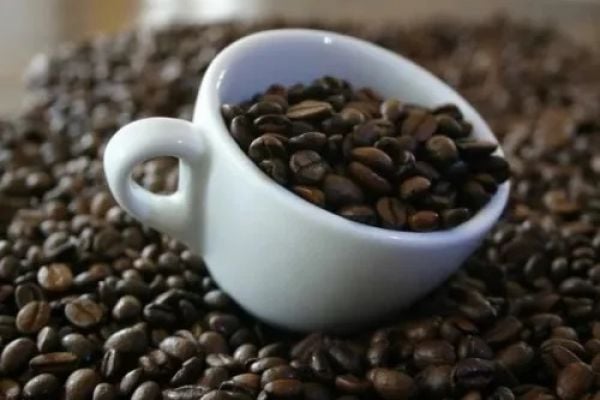Approximately 20% to 25% of the Champagne vineyard has been damaged by mildew fungus due to heavy rainfall in July, adding to severe losses caused by frosts earlier in the season, Champagne industry lobby CIVC has said.
In total, half of the harvest will be lost, CIVC deputy chairman Maxime Toubart told Reuters, although there should be no impact on supply to the market thanks to reserves of previous output.
Torrential rain hit western Europe in mid-July, causing deadly flooding in Germany and Belgium and raising concern about quality and quantity damages to several farm products, including cereals.
"It's terrible, we got too much rain just at a time when we needed hot and dry weather," said Toubart, a producer himself.
Fungus attacks lead the grapes and the leaves to dry up. In some places the whole parcel has been ravaged, Toubart said.
"A loss of 20%-25% on 35,000 hectares is huge. The older generations say they have never seen anything like this," Toubart said.
Severe frost over the winter had already damaged 30% of the production.
"But we are quite serene because we have a reserve, meaning that at the end there should be no impact on the number of bottles available," Toubart said.
Champagne is most often a mixture of several vintages. Winegrowers can keep a reserve of past years' output that can be used when there is a drop in output or extra demand that had not been anticipated.
"Of course we are disappointed by what is happening but the good news is that it will not impact the industry's economy at all. Clients will find their bottles of champagne and there will be no spike in prices," Toubart said.
Frosts Stain Brazil Coffee Belt, Growers See Nearly Third Of Fields Hit
Meanwhile, brownish spots have stained large areas of coffee fields in the south of Brazil's top producer Minas Gerais, a sign that the worst cold snap in nearly 30 years will hurt production for at least the next two crops, according to an agronomist.
Adriano de Rezende, technical coordinator at the Minasul coffee cooperative, estimated that between 20% and 30% of the crops were hit by the unusually cold temperatures that reached the region on July 20, spurring the worst frost since 1994, according to farmers and analysts.
"It was worse than I imagined," said Rezende said after flying over the region on Thursday. "It's hard to see a field that hasn't suffered any damage."
Rezende flew over farms in Varginha and other areas in Minas, such as Eloi Mendes, Paraguaçu, Alfenas, Machado, Boa Esperança e Carmo da Cachoeira.
The agronomist and local farmers said that frost struck the region again on Friday but it was less intense, also hitting the Serra da Mantiqueira area, as a new polar mass advances through the center-south region.
Minasul operates in the south of Minas Gerais, a region that accounted for around 40% of arabica coffee production in Brazil in 2020. Arabica is the main type used by large coffee companies such as Starbucks and Nestle.
Another key producing region, the Cerrado Mineiro, has also been severely impacted.
Minasul President Jose Marcos Rafael Magalhaes estimates the coffee sector in Minas Gerais will lose 5 billion to 6 billion reais ($971.5 million-$1.17 billion) due to lost production.
The frosts in Brazil, the world's largest producer and exporter of coffee, sent prices in New York sky-rocketing to above $2 per pound for the first time since 2014 earlier this week.
Rezende believes it is early to estimate production losses precisely, as more frosts were expected.
He also said that the intensity of the burning by the cold varies even in the same field in a farm, what makes the evaluation harder.
The production cycle of arabica coffee alternates years of high and lower production, since trees get stressed after a large crop and produce less the following year.
Brazil is currently in an off-year, with production seen at around 55 million 60-kg bags by analysts, down from around 70 million bags in 2020. The worst drought in 90 years has also impacted output.
A larger production in 2022 was considered key by analysts to guarantee a balanced global supply next year, as consumption grows around the world due to the reopening of coffee shops after coronavirus-related restrictions.
While visiting the Mato Dentro farm in Varginha, the agronomist said that in a month's time, all the burned leaves will be on the ground, which will make it easier to check how badly the trees were damaged.
The more heavily damaged trees will need a heavy pruning, which means they will only produce again after two years.
Farmer Flavio Figueiredo de Rezende, who produces coffee in Varginha and Carmo da Cachoeira, said that before the frosts, he was expecting near record production in 2022.
"But now, if we produce the same as this year's, it would be already good. It is sad, but that is part of our struggle".
The farmer said the damage will not increase much, since the same areas are likely to be hit by the new polar mass.
Magalhaes, Minasul's president, who is also a farmer, said that most of the production potential for coming crops was lost.
He also said that a lot of coffee seedlings, which became key for the recovery work ahead, were also burned by the cold.
"The recovery will take long. Beyond the damage to young trees, there are no seedlings to plant or expand," he said.
Unusual Frosts In Brazil Seen Knocking Out Sugar Output
Additionally, sugar output in Brazil, the world's largest producer and exporter, is set to slump - and could suffer next year as well - after three frost events hit crops in the country's center-south region in June and July, market analysts have said.
Brazil has been hit with an unusually harsh winter this year with temperatures dropping to freezing levels for several days, hurting crops from corn to coffee and sugar cane. The frost follows one of the country's worst droughts in decades, which also hit the nation's agricultural industry hard.
Broker StoneX cut its projection for Brazil's center-south (CS) sugar production to 34.6 million tonnes for the current crop, down from a May projection of 35.7 million tonnes, and 10% below last season's record volume of 38.4 million tonnes.
Asian commodities trader Wilmar, one of the world's largest sugar merchants, slashed its estimate for Brazil production on Tuesday, saying it only expects around 28 million tonnes of sugar in 2021/22 due to extensive damage to cane fields.
Prices have soared on the expected crop loss. Sugar futures in New York were near the highest in four years last week.
Karim Salamon, Wilmar Sugar head of analysis, said that the widespread frosts will result in lower agricultural yields leading to a cane crush of around 490-500 million tonnes. Brazil's CS crushed 605 million tonnes last season.
StoneX also expects the total cane crush to fall, but not as much. It sees it at 541 million tonnes, down from its previous view of 568 million tonnes.
The broker said it would not rule out further cuts to its projections, since the full extent of damages to crops from the three waves of frosts that hit Brazil are still being assessed.
StoneX now sees the global 2021/22 sugar supply balance swinging to a deficit of 1 million tonnes, from a surplus of 1.7 million tonnes seen in May.
Wilmar said that Brazil's next sugar season would likely suffer as well.
"Immature cane stalks can be very susceptible to frost damage," Salamon said. "This is in addition to the impact of lower replanting resulting from the recent droughts."
News by Reuters, edited by Hospitality Ireland. Click subscribe to sign up for the Hospitality Ireland print edition.









